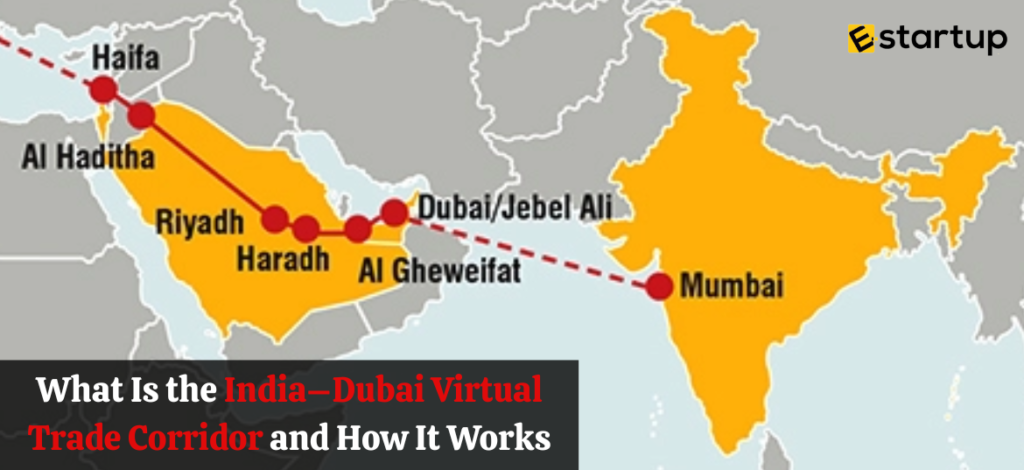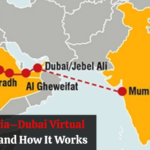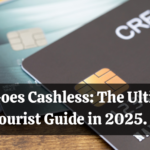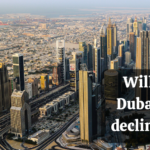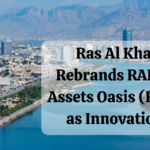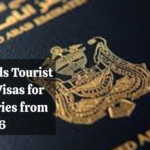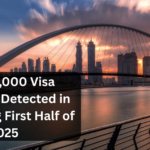The India–Dubai Virtual Trade Corridor (VTC) was officially launched on September 10, 2024, during a business event in Mumbai attended by Abu Dhabi Crown Prince Sheikh Khaled Bin Mohamed Bin Zayed Al Nahyan. This initiative aims to streamline trade processes and enhance bilateral economic ties between India and the UAE.
What is the India-Dubai Virtual Trade Corridor?
Virtual Trade Corridor is simply a digital integration of trade systems between the UAE and India. It links the customs, logistics and regulatory portals in India with the trade systems in UAE so that it facilitates paperless and end-to-end digital trade. The core of this framework is the Master Application for international trade and regulatory interface known as MAITRI, which is an overall platform to coordinate approvals, documentation and compliance checks on both sides of the business.
The corridor incorporates all interest groups in the trade, exporters, importers, shipping companies, regulatory bodies and financial institutions. The corridor is enabled by digitizing the customs clearances, approvals, and logistics documentations, which reduces human intervention and accelerates the process of shipping at a significant rate and lowers.
Key Features of the India-Dubai Virtual Trade Corridor
- MAITRI Platform Integration
MAITRI acts as the central hub linking Indian ports, customs authorities, and logistics providers with UAE systems. Businesses can submit documents, track shipments, and obtain approvals online, reducing delays traditionally caused by manual processing.
- Customs and Regulatory Harmonization.
The corridor enables pre-clearance of products and standardizes the compliance processes. It makes sure that the fulfillment of shipments is in compliance with the Indian and the UAE regulations prior to the departure of the port of origin, which decreases the number of bottlenecks and delays in the inspections at the borders.
- Logistics Efficiency
The corridor streamlines the supply chains by digitalizing documentation and approvals, which save on transportation costs and decreases turnaround times when it comes to shipments. Key port nodes used as anchors to effective cargo control include Nhava Sheva, Deendayal and Jebel Ali.
- Ease of Doing Business
Small and medium enterprises (SMEs) find it easier and quicker to obtain approvals, transparency in customs operations, and easier regulatory compliance. Businesses are now able to work with less administrative load which enhances the general competitiveness.
Why India-Dubai Virtual Trade Corridor Matters for Global Business
- Boosting Trade for MSMEs
The VTC exposes smaller businesses to international trade. It is now possible to have Indian SMEs exporting products to the UAE at a more efficient cost with few delays and fewer transaction costs. This provides a chance of expansion in the markets of the Gulf and via UAE logistics centers, to Africa and Europe.
- Increasing Trade Volumes
The UAE has already been trading with India its non-oil more than 84-billion in 2023 – 24. The corridor will continue to boost trade volumes with improved and fast trade processing that will help the two economies.
- Resilient Supply Chains
Online records and built-in tracking minimize the chances of delayed shipments, lost goods or the lack of control in the customs processes. The supply chains will be more predictable and resilient which is a necessity in the modern globalized market.
- Global Digital Standards
The path promotes trade in digital-first. Digital approvals, sharing of real-time data and online approvals enable businesses to minimize the use of physical paperwork. This establishes an international precedent of a smooth trade between countries.
- Strategic Gateway
The route makes India and the UAE a strategic entry to Europe, Africa, and other areas. Effective online trade routes will attract international investors; boost the competitiveness of logistics and provide an example of international trade systems to be adopted in the future.
Challenges
The VTC has implementation issues:
- Adoption by all the stakeholders: Small exporters can have time to join new digital platforms.
- Data privacy and security: Sensitive trade and financial information should be shared with a strong level of cybersecurity.
- Regulatory alignment: The discrepancy in the standards between India and UAE needs to be constantly balanced.
- Infrastructure improvement: Digital trade requires efficient logistics and warehousing, as well as port infrastructure.
The Future of Digital Trade
IndiaDubai Virtual Trade Corridor is not just a trade program, it is a paradigm shift of how international trade can be done. It concentrates on the idea of speed, transparency, and digital integration to show how trade corridors in the future are going to work, simplifying the cross-border business process and making it quicker and more predictable.
To the exporters, importers, and other global businesses, the corridor has become a blueprint of efficacy demonstrating that the digital-first systems can transform trade in the 21st century. With an increasing number of countries using the same frameworks, the IndiaDubai VCT may be used as an example of a global trading system that is seamless, resilient, and transparent.
The India–Dubai Virtual Trade Corridor is unlocking massive opportunities for global entrepreneurs. Whether you want to expand your exports, set up a free zone company, or explore digital trade in the UAE.
At e-startup.ae, we help you register your Dubai business, get trade licenses, and go fully compliant .
FAQs
1. What is the India–Dubai Virtual Trade Corridor (VTC)?
The VTC is a digital platform linking India’s customs, logistics, and regulatory systems with the UAE’s trade systems. It enables paperless, end-to-end trade with faster approvals and smoother shipment processing.
2. When was the corridor launched?
The India–Dubai VTC was officially launched on September 10, 2024, during a business event in Mumbai attended by Abu Dhabi Crown Prince Sheikh Khaled Bin Mohamed Bin Zayed Al Nahyan.
3. Who can benefit from the VTC?
Indian exporters, UAE importers, SMEs, shipping companies, financial institutions, and regulatory authorities benefit from faster processing, reduced paperwork, and lower trade costs.
4. What are the key features of the corridor?
Key features include MAITRI platform integration, customs and regulatory harmonization, streamlined logistics, and easier regulatory compliance for businesses.
5. How does it impact global trade?
The corridor boosts trade volumes, strengthens supply chains, sets global digital standards, and establishes India and UAE as strategic trade gateways to Africa, Europe, and beyond.
Sources :
- https://www.pib.gov.in/PressReleasePage.aspx?PRID=2122299
- https://www.mediaoffice.abudhabi/en/security/abu-dhabi-customs-signs-agreement-with-tax-authority-of-brazil-to-launch-pilot-phase-of-trusted-digital-trade-corridor-project/
- Infographic of the India–Dubai Virtual Trade Corridor – https://iadnews.in/an-india-west-asia-europe-trade-corridor-is-all-set-to-drive-chinas-bri-into-the-ground/
